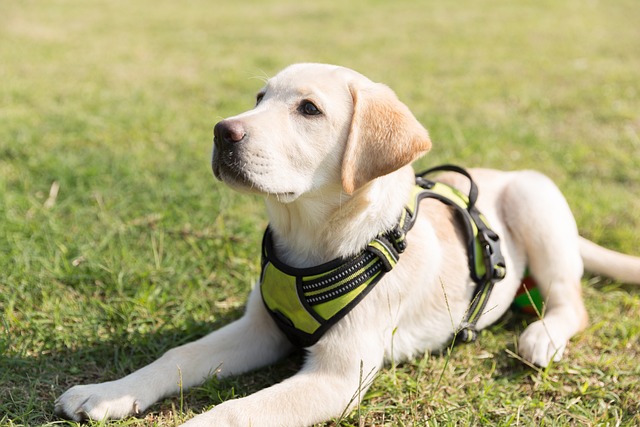
How do i train my dog to be obedient?
Watching your dog dart across the park ignoring your calls isn’t just frustrating—it can put them at risk near busy streets or public spaces.
Training a guide dog for the blind isn’t a race—it’s a journey shaped by every bark, every step, and every quiet moment of connection. Unlike basic obedience training, this work demands precision, trust, and a deep understanding of both canine behavior and the unique needs of someone with visual impairment. So when people ask how long it takes, the answer is rarely simple. It’s a mix of biology, skill, and that unspoken bond between a dog and their human.
Most guide dogs start their lives in the homes of volunteer puppy raisers, usually around 8 to 14 weeks old. For the next 12 to 18 months, these families focus on socialization—exposing the puppies to busy streets, loud noises, and crowded spaces. It’s about teaching them to stay calm in chaos, to follow basic commands, and to start understanding boundaries. This phase lays the groundwork, but it’s just the beginning. Not every puppy makes the cut; some might lack the focus or temperament needed, and that’s okay. The goal is to find dogs ready for the next level.
 Once they’re old enough, the dogs move to professional training centers. Here, trainers spend 6 to 12 months building specialized skills: navigating around obstacles, stopping at curbs, avoiding low-hanging branches, and even knowing when to disobey a command if it’s unsafe. Imagine a dog learning to “intelligently disobey”—that’s the kind of trust these partnerships rely on. This phase is intense, with daily sessions that test both physical and mental stamina. Trainers watch for how the dogs respond to stress, how quickly they learn new tasks, and whether they naturally lean into helping their handler.
Once they’re old enough, the dogs move to professional training centers. Here, trainers spend 6 to 12 months building specialized skills: navigating around obstacles, stopping at curbs, avoiding low-hanging branches, and even knowing when to disobey a command if it’s unsafe. Imagine a dog learning to “intelligently disobey”—that’s the kind of trust these partnerships rely on. This phase is intense, with daily sessions that test both physical and mental stamina. Trainers watch for how the dogs respond to stress, how quickly they learn new tasks, and whether they naturally lean into helping their handler.
Then comes the most important part: pairing the dog with their future partner. This isn’t random. Trainers match personalities, lifestyles, and needs—maybe a more energetic dog for someone who walks long distances, or a calmer one for city living. The two spend 2 to 4 weeks working together, learning each other’s rhythms. The handler teaches the dog their routines, and the dog teaches the handler to trust their guidance. It’s a dance of adaptation, and it can’t be rushed.
Throughout this process, there’s no room for cutting corners—especially when it comes to meeting local standards for service animals. Different regions have specific rules about what qualifies a dog as a guide dog, from training hours to certification requirements. Skipping these steps isn’t just unfair to the dogs; it can put their handlers at risk in public spaces. Responsible training programs always ensure every guide dog meets these benchmarks, so they’re welcome in stores, transit, and other public areas without issue.
Even after certification, the learning continues. Some pairs might need extra time to adjust to new environments, like a busy subway or a quiet rural road. A dog that excels in a city might need weeks to adapt to country lanes, and that’s normal. Age, health, and even the handler’s changing needs can add months to the process. What matters is that by the end, the dog isn’t just a tool—they’re a companion, a confidant, and a bridge to greater independence.
The total time? Usually between 18 months and 2 years from puppyhood to full partnership. It’s a long road, filled with setbacks and small victories. But anyone who’s watched a guide dog gently guide their handler across a street knows: every minute is worth it. These dogs don’t just learn to follow commands—they learn to see the world through someone else’s eyes, and that kind of training can’t be measured in weeks or months. It’s measured in the freedom they bring.

Watching your dog dart across the park ignoring your calls isn’t just frustrating—it can put them at risk near busy streets or public spaces.

New puppy owners often find themselves rushing to clean up accidents before they set in, and that’s where puppy pad training becomes a game-changer.

If you've noticed your dog's waistline disappearing and your veterinarian has mentioned those few extra pounds, your first instinct might be to simply reduce the amount of food in their bowl.

Training a dog to use a designated spot indoors isn’t as daunting as many new owners fear, but it does take consistency and an understanding of your pet’s needs.

That moment of dread on a walk is all too familiar for many new dog owners. You see another dog approaching down the sidewalk of your neighborhood

If the sight of another dog on your neighborhood walk makes your heart sink as your own dog erupts into a frenzy of barking and lunging, you're not alone.